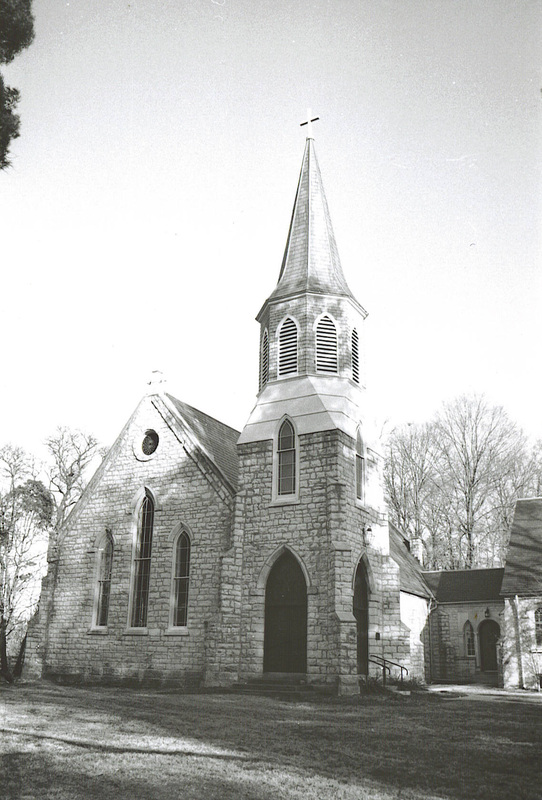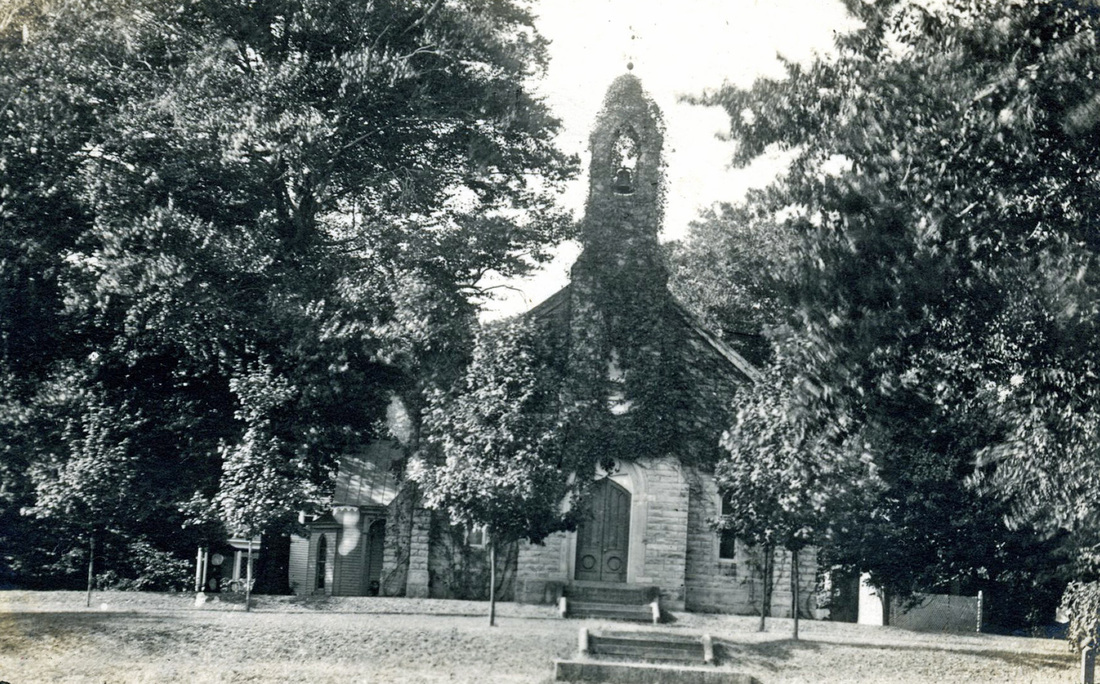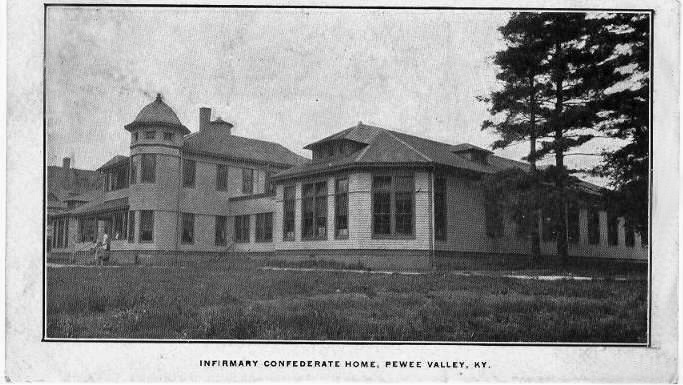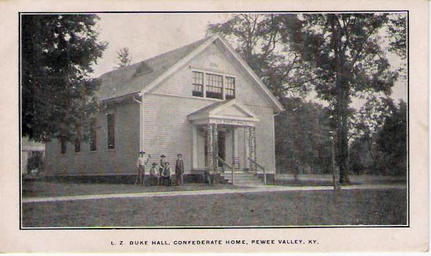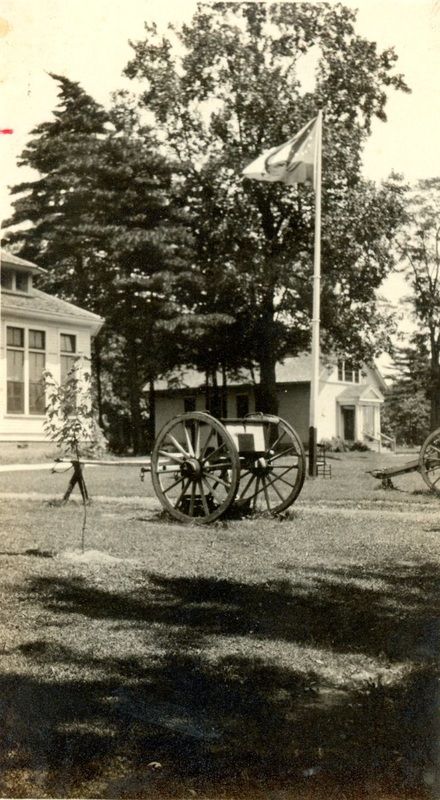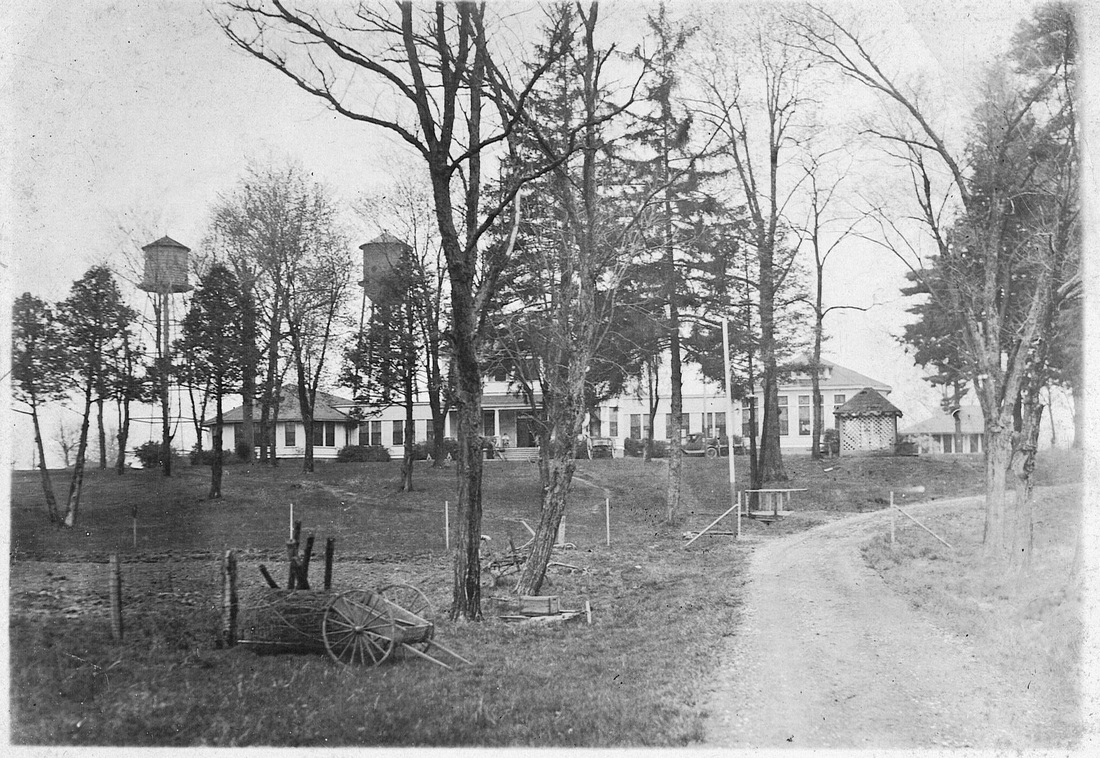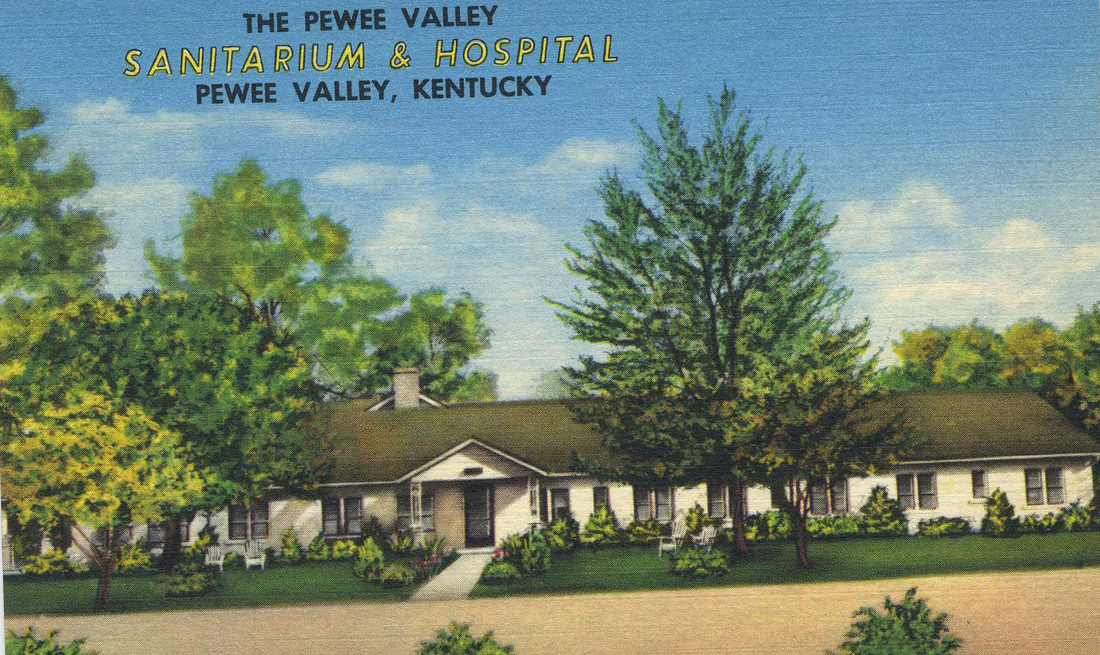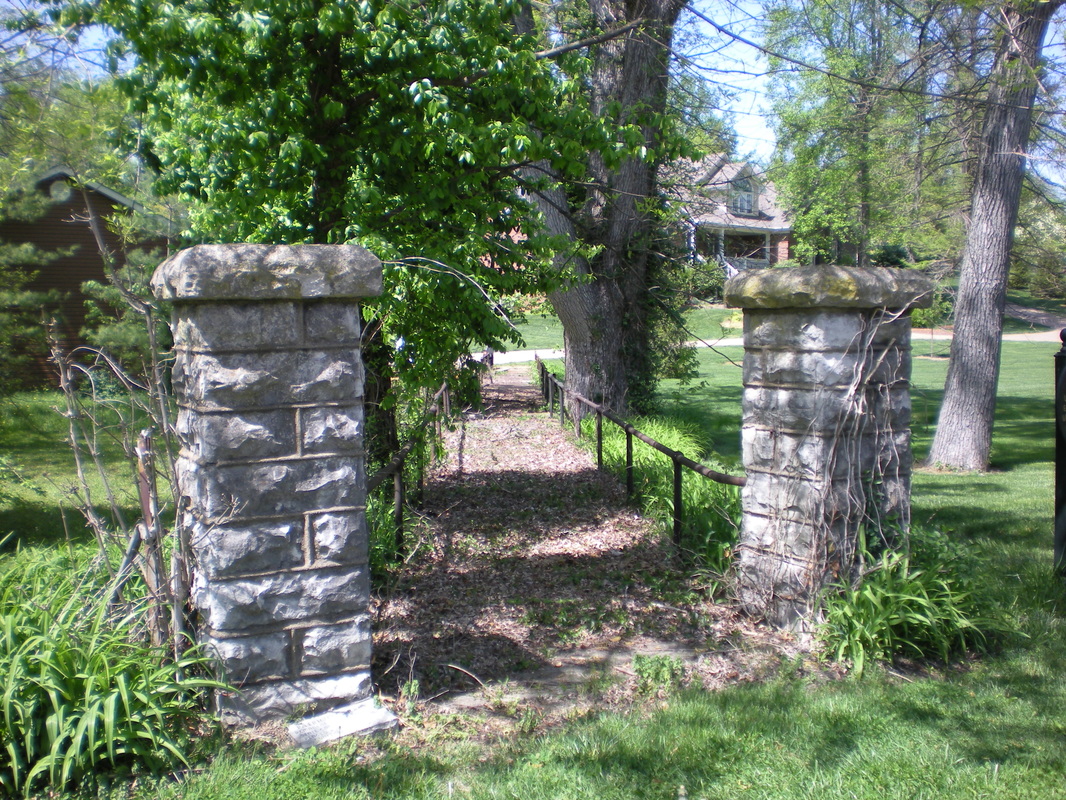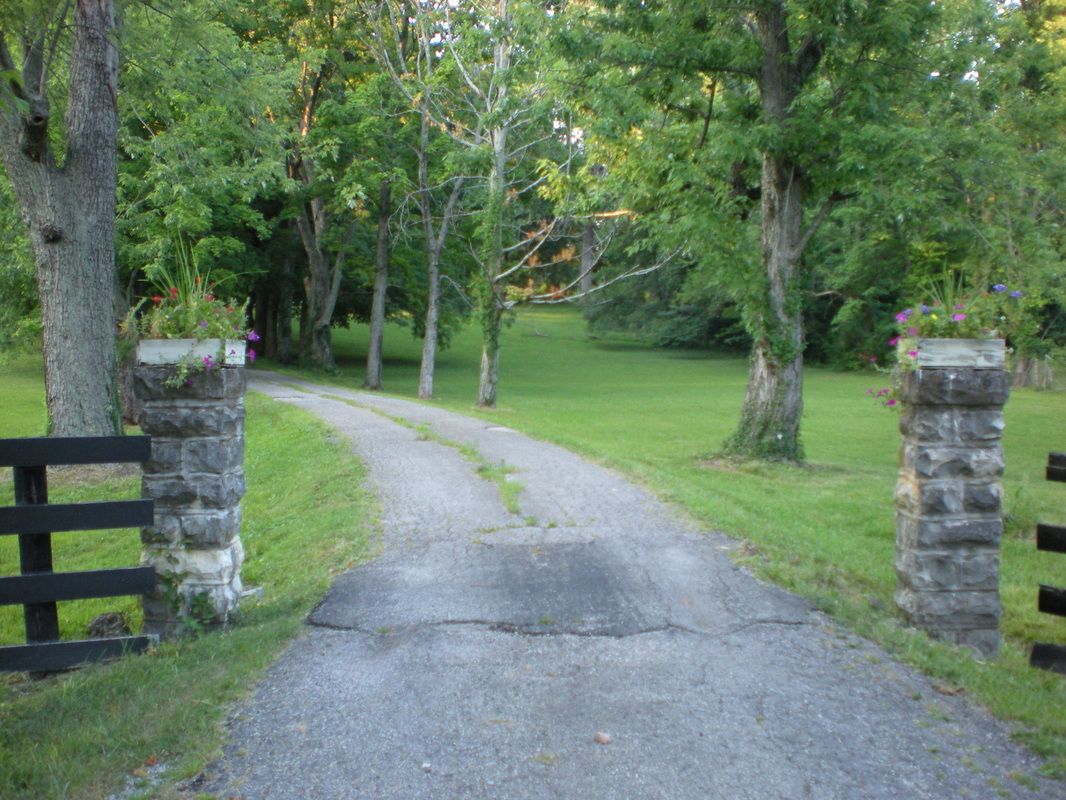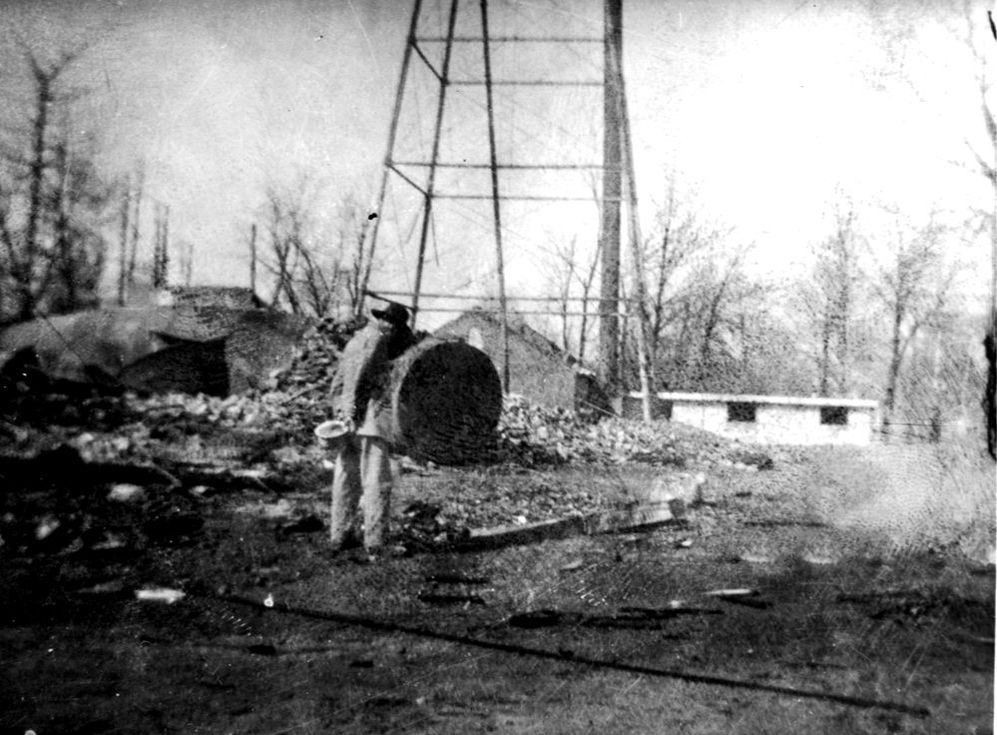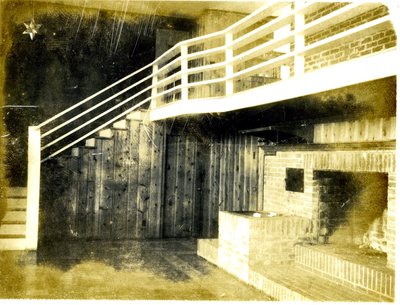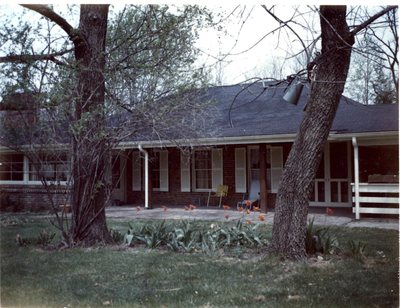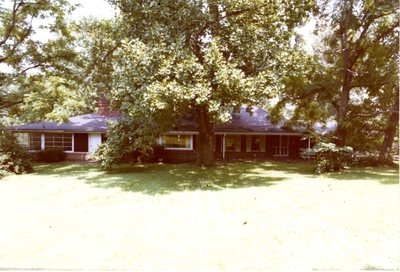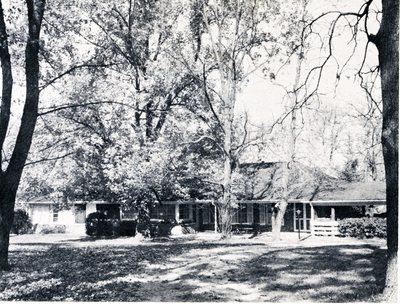What Became of the Confederate HomeBy the time fire consumed the bulk of the Home’s buildings in the spring of 1920, the opposition’s vanguard had died out, as had many of the Confederate veterans.
An account of the fire was published the morning after in the March 26, 1920 Courier-Journal.
FIRE SWEEPS SOLDIER HOME The Home’s campus was much smaller after the fire, but time was taking its toll on the inmates. Public interest in the Home was also waning. As author Rusty Williams observed in "My Old Confederate Home: A Respectable Place for Civil War Veterans," page 246:
... By 1925 nine of ten Kentuckians had been born after Lee's surrender. Cultural memory of the war remained strong in Kentucky, but the old men of the Civil War generation seemed impossibly distant to a generation growing up on radio, airmail, bobbed hair, and jazz. The newspaper-reading public might enjoy an occasional sentimental feature story about one of the Home's aging verterans, but there was little about the Home to sustain wide public interest ... In 1928, the Kentucky Legislature proposed that the Home take in veterans of both the Spanish-American War and WWI. The scheme was summarily squelched, however, by the UDC, and the state agreed to fund it through June 1930. Two years later, after 19 veterans died in just 22 days during an influenza outbreak, only 30 inmates were left. Again, attempts were made to expand the Home’s mission to other military veterans, and again, the UDC shut them down. Peweeans were well aware of the high cost of operating the Home. A Letter to the Editor by "A RESIDENT OF PEWEE VALLEY" published in the February 20, 1932 Courier-Journal provided an eye-witness account of taxpayer waste: ... there are only 11 inmates in the home, and I can go further and state that there are also 13 other persons who get free board at the home: namely, the superintendent, his wife and three grown children, who live in the home, their married sons (employed as engineer and fireman respectively) who live outside the home, a day and a night nurse, cook, assistant cook, and a night watchman, who also lives in the home. There are two other employees who neither live nor board in the home. I believe I am correct when I say that the monthly expense of the home is about $1,400 or more, and of that amount, $775 is paid the employees, $415 of which the family of the superintendent receives. The laundry of the entire family of the superintendent, consisting of 13 in all, is done at the home, and the sons are paid for the privilege of doing it... ... The unkempt condition of the lawn and surroundings indicate neither, pride, thrift nor enterprise. The drive through the grounds, which was built only several years ago at a cost of probably $1,000 or more, because of a lack of patching is today in as bad condition as the old drive that was torn up for the rebuilding of the new. It is nothing unusual to drive through the grounds and see two or three of the family machines lined up for washing and polishing and the grass on the lawn so tall and rank that a child could almost get lost in it. However, precaution is always taken to cut the grass before a meeting with the board of trustees ... Ironically, the Home's superintendent at that time was Pewee Valley resident and former pro baseball player Alexander Shepherd "A.S." McFarlan -- brother of Horace McFarlan, the Oldham County Attorney who had tried to get a Grand Jury indictment against the Home for health reasons in 1905! McFarlan had served as the Home's engineer since 1908 and was intimately acquainted with both the mechanical systems and the inmates. Although not a Confederate veteran himself -- there were simply none left with "... sufficient stamina or health to manage the Home," explains Williams -- he was the most logical choice for superintendent after Commandant Charles L. Daughtry died on July 31, 1923. When the doors finally closed on July 18, 1934, only five inmates remained. They were transferred to the nearby Pewee Valley Hospital and Sanitorium (the site of Friendship Manor Nursing Home today). McFarlan stayed through to the bitter end, inventorying every item on the property, crating it up, and arranging for ambulances to transport the inmates to the hospital. For Pewee Valley, it marked the end of an era. |
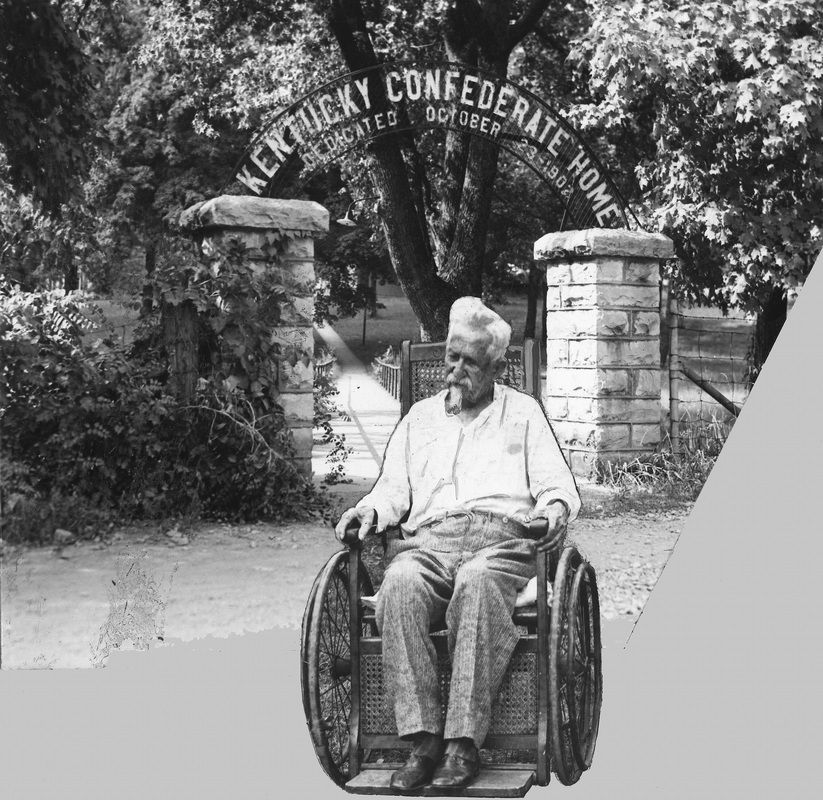
Rev. A.N. White was one of the Confederate Home inmates transferred to the Pewee Valley Hospital and Sanitarium. He is shown here posing in front of the old Kentucky Confederate Home walkway on Mt. Mercy Drive in 1936. From the University of Louisville Photographic Archives, Ekstrom Library, Herald Post Collection
|
The Fight with the State After the Home Closed
Nearly a decade before the Home closed, Pewee Valley's Town Board took steps they hoped would prevent the state from replacing the facility with something worse. On January 5, 1925, they passed Ordinance 62 prohibiting hospitals and other objectionable institutions within the city limits. The ordinance specifically cited "... institutions for the care and treatment of persons afflicted with insanity, or other mental diseases, or for the care and treatment of drug addicts, or for the care and treatment of persons with contagious diseases..." The ordinance further declared all such hospitals or other institutions ... "to be a public nuisance."
The State didn't give a whit about local ordinances. The Depression was on. Kentucky was short on revenue. By one estimate, the property was worth some $60,000. It could be sold, leased, or another state institution could put it to good use. On April 14, 1934, a delegation arrived to explore using it as an overflow facility for Central State Hospital (formerly Lakeland Asylum) in nearby Anchorage. The specter of violent lunatics living in their midst galvanized Peweeans into action. The April 18, 1934 Courier-Journal reported:
Committees were appointed, at a mass meeting held in the Town Hall in Pewee Valley Tuesday night, to call on State officials to determine whether there was any basis for reports that the Confederate Home would be converted into an asylum for mental patients. Approximately 30 residents and property owners met to protest against any step that might be taken to place an objectionable institution on Confederate Home property.
It was announced that another meeting would be held in the schoolhouse 8 o'clock Friday night to discuss with Representative W.B. Belknap the probable disposition of the home.
Reporting a telephone conversation he had with Mr. Belknap, Walter R. Briggs said that the legislator told him that a resolution has passed the House at the last General Assembly providing that the Governor appoint a committee of seven citizens to recommend to the next Legislature what would be the best thing to do with the Confederate Home.
Mr. Briggs says it was probable that nothing would be done with the property until the next session of Legislature, although the institution would cease to function as the Confederate Home July 1.
The immediate cause of the action on the part of the Pewee residents was the inspection of the property by a committee from Central State Hospital, Saturday. One of the residents owning property adjoining the home called Dr. E.H. Maggard, superintendent of the hospital, and asked if the report were true that he intended moving some of his patients to the Confederate Home. Dr. Maggard replied that he had no such intention and that his visit to the institution was of a social nature, it was reported.
A.S. McFarlan, superintendent of the Confederate Home, who was away at the time of the visit from the hospital group, said Tuesday night that he had confidence in the promises of State officials that nothing "objectionable" would be put on the property. He added that the mass meeting was a sensible move for "it pays to be on the alert."
It was suggested that Pewee Valley secure P.W.A. funds (Editor's note: the federal Public Works Administration) and buy the property for the town. To the suggestion that it be converted into a State park, Miss Mary Johnston said that move was proposed to Mrs. Emma Guy Cromwell, director of parks, who pointed out that the property must contain 100 acres before it can be accepted as a State park. Mrs. Crowell suggested that the home be made into a memorial for Confederate soldiers.
J.H. Waterfill was appointed chairman of the committee which will call on Ambrose Dudley, chairman of the board of welfare. F.E. Gatchel, chairman of the Pewee Valley town board, presided at the meeting.
They started a fundraiser through the Pewee Valley Civic Committee, to raise the funds necessary to purchase the property. Documents in the Gatchel Family Collection, courtesy of Susan Lawson, show they
During the 1937 Flood, when some 230,000 Louisvillians were left homeless, it was pressed into service as temporary housing for refugees. The Town Council minutes from May 3, 1937 included the following notation:
Ordered the stone gate post across from the Post Office, Central Ave. entrance to Confederate Home, be repaired, having been broken while delivering coal to flood refugees at Home building.
But the commonwealth would soon propose a permanent use for the facility. Prison reform -- specifically housing male and female prisoners together in the same facility -- had become a political hot potato. The General Assembly ordered the Kentucky State Reformatory to build a new prison for women. One of the locations being considered: the old Confederate Home site.
If Peweeans thought the Confederate Home would ruin the neighborhood, imagine how they felt about a prison smack dab in the center of town! It would be a catastrophe of epic proportions! However, local businessmen were primarily for it. The Great Depression along with the area's fall from grace as a summer resort had taken a toll on their tills. The April 26, 1937 Courier-Journal reported:
Tranquil, tree-lined Pewee Valley rose in indignation ... as word spread that it has been proposed to establish a State prison for women in the abandoned Home for Confederate Veterans.
"What? Let the 'Home of the Little Colonel' become known as the 'Home of Kentucky Convict Women?'" was the angry response of ruffled citizens.
Not all Pewee Valley is protesting, however. Business folk pointed out that, after all, the ramshackle home for Confederates is going further still toward wrack and ruin, and that an up-to-date new prison would bring new customers into the stores...
... A leader among the remonstrants is Miss Mary Johnston, daughter of Annie Fellows Johnston, who wrote the Little Colonel stories.
"It would lower the tone of the whole town to put a women's prison here," she declared. The Confederate Home, she pointed out, is a "tumbled down frame building" and there was a serious fire here some fifteen years ago...
Two years ago an attempt was made to raise funds to purchase the Confederate Home site for the (Pewee Valley) sanitarium, Miss Johnston said. It was also proposed that the home be turned over the the United Daughters of the Confederacy, but that organization was not in a position to accept. During the Flood, the building was occupied by sixty Negro refugees...
... Among the Pewee Valley citizens welcoming the proposal for a prison were Mrs. and Mrs. (Oscar) C. Campbell, proprietors of the Pewee Valley Sweet Shop.
"The old Confederate Home is here and it has to be used in some way," asserted Mr. Campbell. "Most of the people who are objecting are those who already have 'theirs,' and I notice they aren't making any move to buy the property."
Mrs. Campbell added: "We're for it. During the floor when we had refugees here, although they didn't have much money we took in $10 more on the day at the shop and the prison would mean more than that."
James Foley and B.P. Million, also storekeepers, said they had no objection to the proposal, but they were not taking sides. "If the property belongs to the State and if they want to put a prison there, it's up to them," said Mr. Foley. "We have a good State Government and they'll do what's right."
William Herdt, garageman, was on the other side of the fence, however. The Confederate Home is a fire trap, he said, and a prison has no business in Pewee Valley.
"I can't imagine anything more stupid than for politicians to make this move," asserted Frank Gatchel, Louisville businessman, who lives in Pewee Valley. "To have barbed wire entanglements around an institution in the center of town would be unspeakable.
"Pewee Valley has become a shrine to readers of the Little Colonel stories, and thousands of people come by here every summer. This means very considerable in the way of tourist revenue."
Mrs. Albert Willis, who has lived in Pewee Valley most of her eight-five years, said, "The idea is something dreadful. Would you want to live in a place where there were hundreds of criminal women in town?"
The Beeches, old home of Annie Fellows Johnston, would be practically in the shadow of the prison, Miss Mary T. Cleland pointed out.
"We just have a little village here, but there are associations that have become very dear to us," she said.
"Of course, having a prison here would decrease property values, but we are also concerned because of the sentiment we have for Pewee Valley. We didn't object to having the Confederate veterans here. In fact, we became very fond of them. But how would it be Pewee Valley, now known as the 'Home of the Little Colonel' would become known as the 'Home of Kentucky's Convict Women?'"
"A committee, headed by Mr. Frank Gatchel, then Chairman of the Town Board, stormed the Capitol with a petition with over 300 signatures,” stated Mrs. John S. (Katie Smith) in her 1974 publication, Pewee Valley: Land of the Little Colonel.
Fortunately, Pewee prevailed. In the end, the prison was built at Pine Bluff, south of the town and just over the Oldham County line in Shelby County, where it still operates today. Although the official name is the Kentucky Correctional Institute for Women, locals still refer to it as the Pewee Valley Women’s Prison.
State ownership of the former Confederate Home site, however, continued to leave the city vulnerable. What would the state propose next? The only solution was to get the property out of the government’s hands.
The town tried to buy it. At a special meeting on July 22, 1938, the Board of Trustees voted unanimously to file a written bid with the Board of the Department of Public Property of Kentucky to purchase all three tracts of land associated with the Home for “One Dollar ($1.00) cash to be paid upon execution of the deed to Pewee Valley.”
Not all Pewee Valley is protesting, however. Business folk pointed out that, after all, the ramshackle home for Confederates is going further still toward wrack and ruin, and that an up-to-date new prison would bring new customers into the stores...
... A leader among the remonstrants is Miss Mary Johnston, daughter of Annie Fellows Johnston, who wrote the Little Colonel stories.
"It would lower the tone of the whole town to put a women's prison here," she declared. The Confederate Home, she pointed out, is a "tumbled down frame building" and there was a serious fire here some fifteen years ago...
Two years ago an attempt was made to raise funds to purchase the Confederate Home site for the (Pewee Valley) sanitarium, Miss Johnston said. It was also proposed that the home be turned over the the United Daughters of the Confederacy, but that organization was not in a position to accept. During the Flood, the building was occupied by sixty Negro refugees...
... Among the Pewee Valley citizens welcoming the proposal for a prison were Mrs. and Mrs. (Oscar) C. Campbell, proprietors of the Pewee Valley Sweet Shop.
"The old Confederate Home is here and it has to be used in some way," asserted Mr. Campbell. "Most of the people who are objecting are those who already have 'theirs,' and I notice they aren't making any move to buy the property."
Mrs. Campbell added: "We're for it. During the floor when we had refugees here, although they didn't have much money we took in $10 more on the day at the shop and the prison would mean more than that."
James Foley and B.P. Million, also storekeepers, said they had no objection to the proposal, but they were not taking sides. "If the property belongs to the State and if they want to put a prison there, it's up to them," said Mr. Foley. "We have a good State Government and they'll do what's right."
William Herdt, garageman, was on the other side of the fence, however. The Confederate Home is a fire trap, he said, and a prison has no business in Pewee Valley.
"I can't imagine anything more stupid than for politicians to make this move," asserted Frank Gatchel, Louisville businessman, who lives in Pewee Valley. "To have barbed wire entanglements around an institution in the center of town would be unspeakable.
"Pewee Valley has become a shrine to readers of the Little Colonel stories, and thousands of people come by here every summer. This means very considerable in the way of tourist revenue."
Mrs. Albert Willis, who has lived in Pewee Valley most of her eight-five years, said, "The idea is something dreadful. Would you want to live in a place where there were hundreds of criminal women in town?"
The Beeches, old home of Annie Fellows Johnston, would be practically in the shadow of the prison, Miss Mary T. Cleland pointed out.
"We just have a little village here, but there are associations that have become very dear to us," she said.
"Of course, having a prison here would decrease property values, but we are also concerned because of the sentiment we have for Pewee Valley. We didn't object to having the Confederate veterans here. In fact, we became very fond of them. But how would it be Pewee Valley, now known as the 'Home of the Little Colonel' would become known as the 'Home of Kentucky's Convict Women?'"
"A committee, headed by Mr. Frank Gatchel, then Chairman of the Town Board, stormed the Capitol with a petition with over 300 signatures,” stated Mrs. John S. (Katie Smith) in her 1974 publication, Pewee Valley: Land of the Little Colonel.
Fortunately, Pewee prevailed. In the end, the prison was built at Pine Bluff, south of the town and just over the Oldham County line in Shelby County, where it still operates today. Although the official name is the Kentucky Correctional Institute for Women, locals still refer to it as the Pewee Valley Women’s Prison.
State ownership of the former Confederate Home site, however, continued to leave the city vulnerable. What would the state propose next? The only solution was to get the property out of the government’s hands.
The town tried to buy it. At a special meeting on July 22, 1938, the Board of Trustees voted unanimously to file a written bid with the Board of the Department of Public Property of Kentucky to purchase all three tracts of land associated with the Home for “One Dollar ($1.00) cash to be paid upon execution of the deed to Pewee Valley.”
FIRST TRACT:
The real property in Pewee Valley, known as the Confederate Home Property, containing 12 acres, more or less, with all the easements and appurtenances thereto, and all buildings thereon except as follows:
· 2 Wings of central building
· Contagious ward building
· All radiators, pipes and bath room fixtures
· 1 Wooden water tank
· Boiler house
· 1 Steel water tank
· 2 Steam boilers and fixtures
· 1 10-HP Century motor with pump and fixtures
· 1 25-HP Century motor with pump, located at Spring near O’Bannon, KY
· Water pipe line leading from the water Spring near O’Bannon to Confederate Home Property
SECOND TRACT:
The tract of 30 acres of land, more or less, located about one mile West of Pewee Valley, and which is described in Deed Book 33 Page 157 of the Oldham County Court Clerk’s Office. (Editor’s Note: this was known as the Confederate Woods and had been primarily used by the Home as a dump.)
THIRD TRACT:
House and Lot in Rollington, near Pewee Valley, and which is described in Deed Book 36 at page 61 of the Oldham County Clerk’s Office. (Editor’s Note: This was known as the Murphy property and was located on Rollington Road close to where St. Aloysius Cemetery, also known as Catholic Hill, is located today.)
Also present at that meeting was Dr. J.T. Wheeler, administrator of the Pewee Valley Sanitorium and president of the Rural Educational Association of Kentucky. He wanted to buy the “appurtenances” listed in the FIRST TRACT for use on the association’s Pewee Valley campus. In addition to the Sanitorium, the association was also operating a high school and nursing school on the property. When the state declined the town’s $1 bid, it was Wheeler who saved the day by purchasing the Home before year’s end for $8,750.
The real property in Pewee Valley, known as the Confederate Home Property, containing 12 acres, more or less, with all the easements and appurtenances thereto, and all buildings thereon except as follows:
· 2 Wings of central building
· Contagious ward building
· All radiators, pipes and bath room fixtures
· 1 Wooden water tank
· Boiler house
· 1 Steel water tank
· 2 Steam boilers and fixtures
· 1 10-HP Century motor with pump and fixtures
· 1 25-HP Century motor with pump, located at Spring near O’Bannon, KY
· Water pipe line leading from the water Spring near O’Bannon to Confederate Home Property
SECOND TRACT:
The tract of 30 acres of land, more or less, located about one mile West of Pewee Valley, and which is described in Deed Book 33 Page 157 of the Oldham County Court Clerk’s Office. (Editor’s Note: this was known as the Confederate Woods and had been primarily used by the Home as a dump.)
THIRD TRACT:
House and Lot in Rollington, near Pewee Valley, and which is described in Deed Book 36 at page 61 of the Oldham County Clerk’s Office. (Editor’s Note: This was known as the Murphy property and was located on Rollington Road close to where St. Aloysius Cemetery, also known as Catholic Hill, is located today.)
Also present at that meeting was Dr. J.T. Wheeler, administrator of the Pewee Valley Sanitorium and president of the Rural Educational Association of Kentucky. He wanted to buy the “appurtenances” listed in the FIRST TRACT for use on the association’s Pewee Valley campus. In addition to the Sanitorium, the association was also operating a high school and nursing school on the property. When the state declined the town’s $1 bid, it was Wheeler who saved the day by purchasing the Home before year’s end for $8,750.
Home Built from the Old Kentucky Confederate Home Laundry
The plan was to develop a community for underprivileged children that included a school, dorm and working farm. The Home and most of the buildings were razed. Some of the salvage was put to good use by local commercial nurseryman Theodore Klein, founder of Yew Dell Gardens in Crestwood.
The Rural Educational Association's grand plan for the property were never realized. Ten years later, it was sold to a family, who lived for a time in the Home’s former laundry before adding on to the building to create a more modern residence. Anne Montgomery’s “35 Landmark Home of Pewee Valley” published in January 1994 by the City of Pewee Valley noted:
On a 7-and-half acre plot is all that’s left of the old confederate home. The older part of this ten-room residence is about 150 years old. It remains from what was once the Confederate Home laundry. Before it was remodeled, the original floors were said to have sloped down to a trough at the bottom. The walls in that part of the home are very thick and some original brick floors still exist.
The Rural Educational Association's grand plan for the property were never realized. Ten years later, it was sold to a family, who lived for a time in the Home’s former laundry before adding on to the building to create a more modern residence. Anne Montgomery’s “35 Landmark Home of Pewee Valley” published in January 1994 by the City of Pewee Valley noted:
On a 7-and-half acre plot is all that’s left of the old confederate home. The older part of this ten-room residence is about 150 years old. It remains from what was once the Confederate Home laundry. Before it was remodeled, the original floors were said to have sloped down to a trough at the bottom. The walls in that part of the home are very thick and some original brick floors still exist.
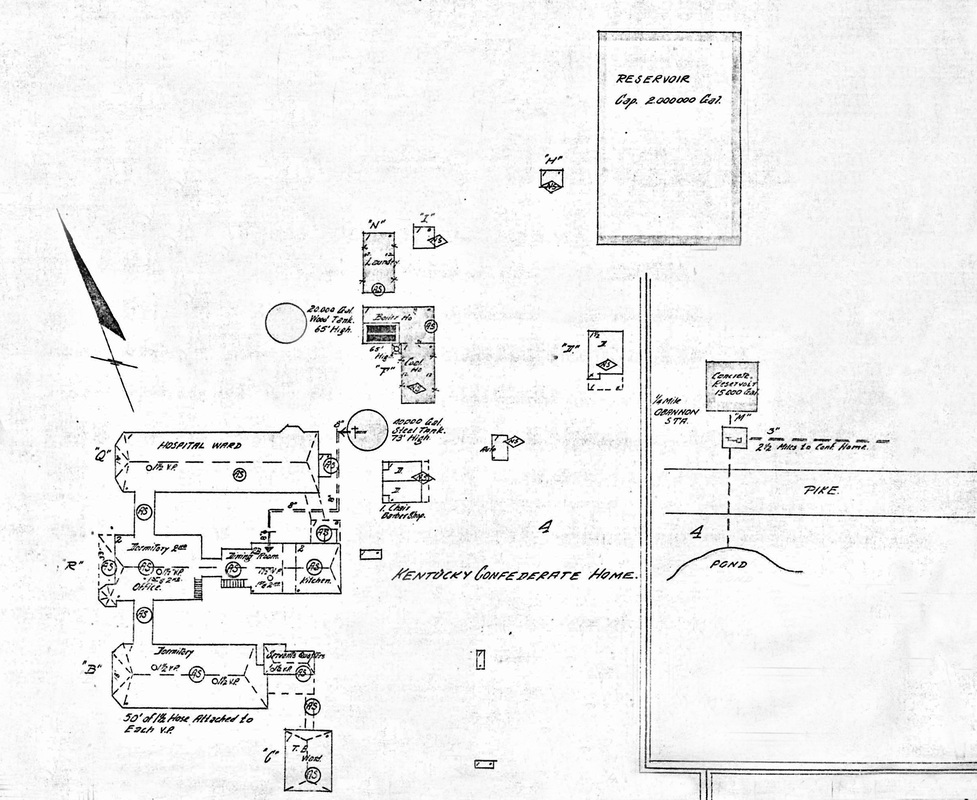
Enlargement of the Kentucky Confederate Home property taken from a 1929 Pewee Valley Insurance Map in the city archives. The laundry building, now a single family residence, is clearly marked. The year of the map is significant in that 1929 was the year the Pewee Valley Fire Department was established.
Postscript
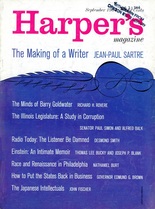
In September 1964, Harper's Magazine published a story called, "The Romance of Pewee Valley." It underscores what a great debt Peweeans owe to former Mayor Frank Gatchel for leading the charge that stopped a women's prison from locating in the center of town and to the Rural Educational Association of Kentucky for purchasing the property and placing it once again in private hands:
The Romance of Pewee Valley
The Romance of Pewee Valley
Commonwealth of Kentucky
Office of the Attorney General
Frankfort
February 6, 1964
Office of the Attorney General
Frankfort
February 6, 1964
Honorable Howard E. Black
Director
Division of Institutions
Department of Corrections
Frankfort, Kentucky
Director
Division of Institutions
Department of Corrections
Frankfort, Kentucky
Dear Mr. Black:
This is in reply to your letter of February 4 concerning the marital status of one of the female inmates at the Women's Prison in Pewee Valley. Since institutional rules permit an inmate to correspond with or receive visits only from her legal husband, if married, a clarification of this matter is desired.
The inmate under consideration entered the women's prison under the name of the individual who was found to be her second husband. We shall designate him "B." Upon learning that the inmate had previously married "A" and had not obtained a divorce for "A" prior to her marriage to "B," the warden of the women's prison refused visiting and mailing privileges to "B." "B" then paid the costs of the legal proceedings by which the female inmate obtained a divorce from "A," her first husband.
At a later date, the female inmate and "B" were remarried -- presumably, to validate the former marital contract. However, when the female inmate was paroled, she discovered that prior to her remarriage to "B," "B" himself and married another woman and he had not obtained a divorce from this woman at the time of his remarriage to the female inmate. The female inmate without securing a divorce from "B" then married "C."
The issue presented is whether the female inmate, who had been recommitted to the Women's Prison at Pewee Valley, may correspond with and receive visits from "C," her latest known husband.
Needless to day, this case presents a factual situation which our research indicates is unique in the annals of jurisprudence. A somewhat similar factual situation was presented in the case of Walker v. Matthews, 191 Miss. 489, 3 So. 820 (1941). In that case, the defendant died intestate at the age of seventy. He had been a fireman on a railroad and like the sailor with a paramour in every port, it had been his desire to have one at every depot along his line. As the defendant neared the end of life's run, he returned to his home terminal, so to speak, and as his engine was puling into the terminal, its fires were burning low. While sitting on his front porch and rocking with the grain in the shade of a sugarplum tree in Lauderdale County, Mississippi, the fire went out and he was gathered unto his fathers. Since he left a sizable estate, many of his depot sweethearts contended that they were his common-law wives and entitled to it. Unfortunately, the applicability of this case to the one at the bar ends here, since Kentucky does not recognize common-law marriage.
However, we are not without legal guidance in this matter. The Kentucky General Assembly years ago in the exercise of what now appears to have been a profound ability to perceive and prognosticate this delicate situation now being considered, enacted KRS 402.020. This statute provides that marriage is prohibited and void "when there is a husband or wife living, from who the person marrying had not been divorced."
Applying the provision of this statute to the case at bar, the female inmate's first marriage to "B" was void because she was still married to "A." When she married "B" the second time, this marriage was also void because "B" was married to another woman. Thus, in the absence of extenuating circumstances not now before us, the female inmate, in our opinion, is the legal wife of "C." However, this conclusion may be in jeopardy because in our telephone conversation of recent date, you advised us that the warden of the women's prison had informed that the female inmate considered herein had just received a letter from a fourth man who indicated in said letter that the female inmate should be wearing his wedding band. Should this be the case, you may desire to submit additional facts to the office and request a supplemental opinion. It would appear that the inmate's propensity for matrimony is equaled only by her aversion to divorce.
In conclusion, we note that a lesson of life is contained in the factual elements of this case. The mind and heart of man, or woman, as the case may be, cannot be imprisoned in a hermitage of steel and stone. The great works of O. Henry, for example, were penned in a prison cell as were many of the books of the New Testament. Other examples could be cited. Likewise, the amorous inclination of individuals are not subject to physical barriers.
We are not attempting to explain any of these occurrences, especially the latter one. We merely observe them secondhand. Other states may boast of Niagara Falls, Lookout Mountain, or other resort areas for honeymooning couples, but Kentucky must be the first state wherein a women's prison has been the setting for a romantic rendezvous of the scope and extent noted heretofore. Undoubtedly, much of the incentive for these romantic adventures may be attributed in large measure to the aromatic fragrance of honeysuckle in bloom, the sweet refrain of the melodious voice of the nightingale in the lilac bush, and the warm glow of the golden moon on the pleasant and placid premises of the Women's Prison in Pewee Valley.
As a word of caution, we note in conclusion, that we are now in the midst of a Leap Year. To be forewarned is to be forearmed.
This is in reply to your letter of February 4 concerning the marital status of one of the female inmates at the Women's Prison in Pewee Valley. Since institutional rules permit an inmate to correspond with or receive visits only from her legal husband, if married, a clarification of this matter is desired.
The inmate under consideration entered the women's prison under the name of the individual who was found to be her second husband. We shall designate him "B." Upon learning that the inmate had previously married "A" and had not obtained a divorce for "A" prior to her marriage to "B," the warden of the women's prison refused visiting and mailing privileges to "B." "B" then paid the costs of the legal proceedings by which the female inmate obtained a divorce from "A," her first husband.
At a later date, the female inmate and "B" were remarried -- presumably, to validate the former marital contract. However, when the female inmate was paroled, she discovered that prior to her remarriage to "B," "B" himself and married another woman and he had not obtained a divorce from this woman at the time of his remarriage to the female inmate. The female inmate without securing a divorce from "B" then married "C."
The issue presented is whether the female inmate, who had been recommitted to the Women's Prison at Pewee Valley, may correspond with and receive visits from "C," her latest known husband.
Needless to day, this case presents a factual situation which our research indicates is unique in the annals of jurisprudence. A somewhat similar factual situation was presented in the case of Walker v. Matthews, 191 Miss. 489, 3 So. 820 (1941). In that case, the defendant died intestate at the age of seventy. He had been a fireman on a railroad and like the sailor with a paramour in every port, it had been his desire to have one at every depot along his line. As the defendant neared the end of life's run, he returned to his home terminal, so to speak, and as his engine was puling into the terminal, its fires were burning low. While sitting on his front porch and rocking with the grain in the shade of a sugarplum tree in Lauderdale County, Mississippi, the fire went out and he was gathered unto his fathers. Since he left a sizable estate, many of his depot sweethearts contended that they were his common-law wives and entitled to it. Unfortunately, the applicability of this case to the one at the bar ends here, since Kentucky does not recognize common-law marriage.
However, we are not without legal guidance in this matter. The Kentucky General Assembly years ago in the exercise of what now appears to have been a profound ability to perceive and prognosticate this delicate situation now being considered, enacted KRS 402.020. This statute provides that marriage is prohibited and void "when there is a husband or wife living, from who the person marrying had not been divorced."
Applying the provision of this statute to the case at bar, the female inmate's first marriage to "B" was void because she was still married to "A." When she married "B" the second time, this marriage was also void because "B" was married to another woman. Thus, in the absence of extenuating circumstances not now before us, the female inmate, in our opinion, is the legal wife of "C." However, this conclusion may be in jeopardy because in our telephone conversation of recent date, you advised us that the warden of the women's prison had informed that the female inmate considered herein had just received a letter from a fourth man who indicated in said letter that the female inmate should be wearing his wedding band. Should this be the case, you may desire to submit additional facts to the office and request a supplemental opinion. It would appear that the inmate's propensity for matrimony is equaled only by her aversion to divorce.
In conclusion, we note that a lesson of life is contained in the factual elements of this case. The mind and heart of man, or woman, as the case may be, cannot be imprisoned in a hermitage of steel and stone. The great works of O. Henry, for example, were penned in a prison cell as were many of the books of the New Testament. Other examples could be cited. Likewise, the amorous inclination of individuals are not subject to physical barriers.
We are not attempting to explain any of these occurrences, especially the latter one. We merely observe them secondhand. Other states may boast of Niagara Falls, Lookout Mountain, or other resort areas for honeymooning couples, but Kentucky must be the first state wherein a women's prison has been the setting for a romantic rendezvous of the scope and extent noted heretofore. Undoubtedly, much of the incentive for these romantic adventures may be attributed in large measure to the aromatic fragrance of honeysuckle in bloom, the sweet refrain of the melodious voice of the nightingale in the lilac bush, and the warm glow of the golden moon on the pleasant and placid premises of the Women's Prison in Pewee Valley.
As a word of caution, we note in conclusion, that we are now in the midst of a Leap Year. To be forewarned is to be forearmed.
Very truly yours,
ROBERT MATTHEWS
Attorney General
By: Ray Corns
Assistant Attorney General
ROBERT MATTHEWS
Attorney General
By: Ray Corns
Assistant Attorney General
Related Links:
How the Kentucky Confederate Home Wound Up in Pewee Valley
Pewee Valley's Side of the Kentucky Confederate Home Story
A Visit to the Kentucky Confederate Home in 1915
Videos of the 2010 Confederate Memorial Day Observation
The Confederate Burying Ground at Pewee Valley Cemetery
1906 Kentucky Confederate Home Insurance Map
Confederate Hill Map, 2010

